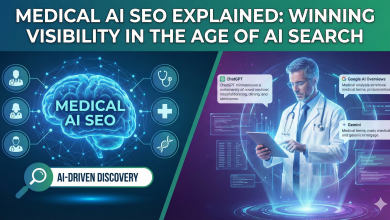
Competition for customer loyalty is fiercer than ever and businesses are pinning their hopes on AI to give them the advantage. AI tools are already playing an increasingly important role in customer-facing applications such as personalisation, chatbots and tailored marketing experiences. However, organisations face significant hurdles when it comes to integrating AI into the infrastructure and work flows of customer interaction.
Our own research has shown that businesses across all sectors are adopting AI, but only 11% are ready to scale it. Finding the holy grail of personalised customer engagement to drive loyalty and lifetime value depends on having unified, actionable customer data. Many businesses, however, lack this foundational infrastructure, which is essential if AI’s full potential is to be unlocked.
We look at four key challenges businesses must overcome to capitalise on the opportunity and gain the competitive edge that AI promises.
1. Unclear goals
Overly ambitious objectives and undefined scopes are known to hold back all kinds of digital transformation. Businesses need to decide early on what they want their AI implementation to achieve: whether that’s acquiring new customers, improving conversion in certain segments or increasing customer lifetime value (CLV). The more specific your AI goals are, the greater your chances of success.
As well as setting goals, defining the budget is paramount. In our report 46% of businesses cite the high costs of AI tools as a top challenge. Personalisation requires time and resources, and investment in AI can quickly snowball.
A smarter, more scalable approach is to use AI to create sharper audience segments and quickly tailor messaging to each one. Crafting communications based on different customer segments’ browsing habits and price sensitivity, for example, allows a brand to spin a single promotion into specific messages for each target group without having to start from scratch each time.
2. Unregulated use
AI is only as good as the data it learns from. Incomplete or inaccurate data can lead to flawed insights and misguided strategies. This can end up having the opposite effect to your customer engagement intentions.
Good data hygiene is paramount. Out of date or incomplete customer records create blind spots in AI’s understanding which can lead to poor assumptions shaping key decisions. Safeguards should be put in place to ensure responsible use of AI tools. Teams need to understand how and where AI adds value and where its limitations lie. For example, review by a human eye needs to be part of the process to ensure that any outputs hit the mark.
3. Silos
While businesses may have an abundance of data, it is often disparate. Different teams manage different systems using different formats, often in isolation. Each department may have its own goals for AI but, without coordination, siloed teams can stall progress. AI can’t generate full-picture insights if it only sees part of the data, so alignment on data sharing, priority use cases, and success metrics is essential.
With the right tools, however, AI can foster collaboration. Natural language processing, for instance, empowers marketing teams to access insights directly without having to wait for IT to pull data. They can then generate tailored content in real time – streamlining workflows and uniting efforts.
4. Fragmented data
Modern brands collect customer data across websites, apps, loyalty programs, and physical stores. This omnichannel activity creates vast amounts of information—but also duplication, inconsistencies, and outdated records. The result is fragmented customer profiles that lead to unreliable outputs.
This leads to a fragmented view of customer profiles, which results in unreliable outputs. In our research, 58% of respondents say their customer data is fragmented or incomplete. To successfully implement AI for marketing purposes, businesses need a clear, reliable view of their customers.
The first step needs to be identity resolution – the process of resolving inconsistencies and stitching together existing records into a single, accurate customer profile. This provides a solid foundation to understand customer behaviour and measure value with confidence. Once resolved, these profiles can be fed into a customer data platform (CDP) to be used for everything from audience discovery to channel strategy.
Gaining the edge with a CDP
Businesses with a customer data platform are far more confident in their ability to understand and act on customer behaviour than those without. Our research shows a wide disparity in the frequency of AI use between these groups for marketing and analytics. 60% of CDP-equipped brands use AI daily or several times per week, whereas only 29% of those without a CDP do so. When it comes to data preparation for marketing or analytics, 35% of companies with CDPs use AI against only 9% of those without.
With AI-powered identity resolution in a customer data cloud, businesses can unify data without moving it, transforming fragmented records into complete customer profiles that fuel AI to deliver more adaptive, personalised customer experiences. Those who integrate AI into core workflows across supply chain, merchandising, and engagement are setting the new standards for customer experience.
The Path Forward
Organisations are moving fast to capitalise on AI’s promise. It can deliver real business success, but only with the right foundation. True transformation starts with clean, unified customer data and a CDP is a critical enabler of enterprise AI strategy. Added to this are clear objectives and budgets, collaboration across the organisation and strong safeguards for AI deployment. With these elements in place, AI will set any business on a winning path.



